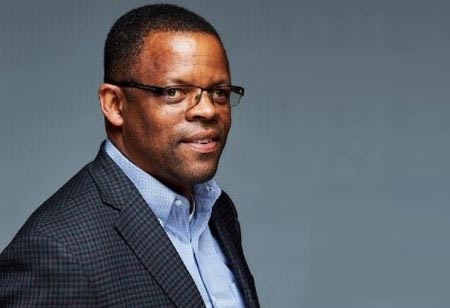Thank you for Subscribing to Healthcare Business Review Weekly Brief

Creating A Transformational Real Estate Team
Healthcare Business Review
Corporate organizations face increasing headwinds as challenges like intense market competition, increasing consumer demands, significant deferred maintenance backlogs, war for talent, and spiraling expenses that impact margin attainment. Desperate times may call for desperate measures however;the creation of a transformational real estate team is one pragmatic step towards extracting greatervalue from existing real estate portfolios. Transformational real estate teams can provide synergisticexpertise which creates greater value across a spectrum of real estate functions to include capitalprogram delivery, operations and maintenance, real estate portfolio management, sustainability,strategic sourcing (to include supplier diversity). The march to transformation begins withestablishment of foundational elements of a center of excellence (COE). Although COE can be definedin myriad of ways, there are foundational elements that should be incorporated into any high performingteam. In creating transformational, high performance teams six key attributes are core;
- Governance
- Process Standardization
- Workforce Development
- Digital Transformation
- Strategic Sourcing
- Culture
As an example, high performing military units are typically defined as having strong governance.Governance relates to how a unit is structured, organized, and aligned to execute strategic objectives inaccordance with plans, policy, regulations, and overall commander’s intent. Roles and responsibilitiesare well defined both within and external to the core organization. Strong governance enables agility inoperations and timely decision making, balanced against established well defined priorities of workwhich lead to highly efficient deployment of resources. Similarly, high performing real estate teamsbenefit from strong governance and are fueled by well thought, well planned initiatives that arecaptured in authoritative capital programs executed with discipline. Governance is the foundation uponwhich transformational real estate teams are established. Organizations with well establish capitalprogram approval governance can achieve exponentially greater cost reduction and value creation thanalternatives such as value engineering and scope reductions.
Standardized processes are to real estate and facilities management services as sheet music is to anorchestra. They enable effective coordination of effort across all functional areas of real estate as wellas interplay with key stakeholders such as finance, strategy, and operations. Key performanceindicators, performance and design standards, and other business and operations metrics are essentialin understanding how well the organization is performing. However, as staffing challenges continue tomount, process standardization will be essential to indoctrinating personnel who may either be lessexperienced, transitioning from other industries, or both. To continue the music analogy, real estatetransformation might require that the industry recruit classically trained musicians to play in the jazzband. Process standardization provides a baseline for not only understanding how the business workstoday, but defining how it should work tomorrow. Classically trained musicians could assist in creatingtomorrow’s model.
Once tomorrow’s model of service delivery is defined, the challenge becomes defining the attributes ofthat future workforce.Through a combination of workforce development (e.g. training, certification,coaching, etc.) and recruitment, evolving today’s employees into that future centric team begins withsetting well defined expectations.
In many cases, workforce transformation could involve recruitmentof talent from outside industries. Today’s team may be highly transactional, project focused, work insilos, lacking in diversity, and technologically challenged while the future team may need to possessskills that are more strategic, program centric, client relations oriented, require greater business acumenand data analytic skills, while including perspectives that better reflect the market being served. There’sno time like the present to begin setting the expectations for that future oriented team.
Digital transformation is a force multiplier which offers significant opportunities to introduce moreimpactful performance improvements. Leveraging technology to provide tracking, monitoring, andautomated control functions will free critical staffing resources to perform higher order functions that mandate human intervention. Since digital applications and systems enable greater visibility intooperations, asset utilization, sustainability, and business performance, this enhanced knowledge willfurther enable more agile and timely business decisions. Individual contributors make critical businessdecisions on a daily if not hourly basis. Armed with a greater understanding of the cost implications oftheir decisions, the entire real estate team can be empowered to make value based decisions. Theresulting data and analytics can be used to craft reports and dashboards that inform executive leaderson key performance indicators.
“High performing real estate teams benefit from strong governance and are fueled by well thought, well planned initiatives that arecaptured in authoritative capital programs executed with discipline”
Value based decisions are also critical to the effectiveness of a comprehensive strategic sourcingprogram. Comprehensive facilities acquisitions strategies can balance myriad corporate imperativesranging from requirements related to capital acquisitions, operations, technological innovation, and realestate to environmental and socio-economic objectives like supplier diversity. A real estate teamcapable of leveraging increasingly scarce capital, spend to fulfill a spectrum of strategic corporateinitiatives can yield enhanced reputational value for the enterprise within both industry and thecommunity. Strategic partnerships and vendor relationships are increasingly foundational to theorganization’s success as organizations seek opportunities to improve performance and create value.
Transformational change is, however, not achievable without an underlying culture that promotescollaboration, innovation, risk taking, psychological safety, diversity of thought, and empowerment ofboth the team and individual. Organizational culture should be aligned with company vision, values, andguiding principles and created with intentionality. As individual contributors, supervisors, and managersbecome more vested in the vision, in the best environments, they become co-equal partners withdirectors and executive leaders. Accumulatively, the team becomes greater than the sum of its collectiveparts. And as the team achieves heightened levels of performance excellence, the pessimism which mayhave previously permeated the organization when dealing with headwinds is replaced by optimism.
Winston Churchill often stated that, “the pessimist sees the difficulty in every opportunity. The optimistsees the opportunity in every difficulty.” When real estate teams begin to take on the attributes ofoptimism, there are suddenly no bad days. There are only opportunities to excel. As that mindsetbegins to permeate the team, tra









